Blow-Down Procedure for Marine Boilers
Boiler is one of the most important machinery systems on the ship. An economic and efficient working of a marine boiler on a ship requires timely maintenance and special care in starting and stopping the boiler. Routine cleanup is extremely helpful in increasing the working life of a marine boiler.
In this article we have brought to you one such important procedure – boiler blow down, which has to be performed at a regular interval of times in order to increase the performance of the boiler.
Why Boiler blowdown?
The water which is circulated inside the boiler tubes and drum contains Total Dissolved Solids (TDS) along with other dissolved and undissolved solids. During the steam making process, i.e. when the boiler is in operation, the water is heated and converted into steam. However, these dissolved solids do not evaporate and get separated from water or steam, and they tend to settle at the bottom of the boiler shell due to their weight. This layer will prevent the transfer of heat amid the gases and the water, eventually overheating the boiler tubes or shell.
Related Read: The Science Behind Marine Boiler Water Circulation on Ships
Different dissolved and undissolved solids lead to scaling, corrosion, erosion etc. The solid impurities will also be carried over with the steam into the steam system, leading to deposits inside the heat exchanger surface where the steam is the primary heating medium.
To minimise all these problems, boiler blowdown is done, which helps in removing the carbon deposits and other forms of impurities.
Guides To Learn About Marine Boilers:
Boiler Blow Down
Boiler blow down is done to remove carbon deposits and other impurities from the boiler.
Blow down of the boiler is done to remove two types of impurities – scum and bottom deposits. This means that blow down is done either for scum or for bottom blow down. Moreover, the reasons for boiler blow down are:
1. To remove the precipitates formed as a result of chemical addition to the boiler water.
2. To remove solid particles, dirt, foam or oil molecules from the boiler water. This is mainly done by scum valve and the procedure is known as “scumming.”
3. To reduce the density of water by reducing the water level.
4. To remove excess water in case of emergency.
Inside a marine boiler, the blowdown arrangement is provided at two levels; at a bottom level and the water surface level known as “scum blowdown”.
Hence, when the bottom valve is used, the procedure is known as boiler blowdown, and when the Scum valve is used, the process is known as “scumming.”
Related Read: Video Tutorial: How Ship’s Boiler and Steam System Works?
The boiler water blowdown can be done in two ways depending upon the type, design, automation used, the capacity and the characteristics of the boiler feedwater system:
Intermittent or Manual blowdown:
When blowdown is done manually by the boiler operator at regular intervals according to the established operating program, it is known as Manual blowdown. This type of blowdown is useful to remove sludge formation or suspended solids from the boiler. This type of blowdown comes handy when there is an oil ingress in the boiler water due to leakage in the heat exchanger. Using manual scumming, the oil present in the water surface can be taken out.
The major drawback of manual blowdown is the heat loss due to hot water going out of the water drum. The valve is opened slightly making a small quantity of water to go into the blowdown. Still, there is significant heat and pressure loss.
Continuous blowdown:
Many modern boilers are nowadays provided with blowdown automation.
They allow the continuous blowdown of the boiler water, which helps in keeping the dissolved and suspended solids under boiler operating limits. This system is known as continuous blowdown.
In this system, the automation monitors the blowdown continuously and in turn checks the quality of feed water and the quality of water inside a boiler shell for dissolved and undissolved impurities. Accordingly, it will automatically open the blowdown valves if the boiler water TDS exceeds the permissible operating limit.
As the blowdown valves are precisely controlled, the water discharged from the blowdown removes the maximum amount of dissolved impurities with minimum heat and water loss from the boiler water, maintaining the boiler efficiency.
Most of the boiler with continuous blowdown automation are fitted with heat recovery systems, i.e. the hot water from the boiler blowdown is first sent to a heat exchanger unit which utilises the heat of the water (e.g. to preheat the feedwater by installing a heat exchanger or heat recovery equipment in the path) before it goes overboard.
The choice of blowdown system, i.e. either manual or continuous and automatic, will depend on various factors and the blowdown valves will be fitted with suitable accessories as per the system.
How to calculate the percentage of blowdown:
Quantity blowdown water/Quantity feedwater X 100 = % blowdown
Related Read: Choosing A Marine Boiler While Designing A Ship
Procedure for Scumming and Bottom Blow Down
Below is the procedure for the boiler blow down using the blow down valve located at the bottom of the boiler. In order to do scumming, instead of bottom blow down, the scum valve is to be opened.
Steps for blow down procedure are as follows:
Kindly refer the diagram to understand the blow down procedure properly.
A modern boiler should never be blown down while the boiler is steaming at high rates. While performing the blowdown, the shipside valve should always be open first, then the blowdown valve. This will allow control to the operator in case a pipe burst.
1. Open the overboard or ship side valve(1) first.
2. Open the blow down valve (2), this valve is a non-return valve.
3. The blow down valve adjacent to the boiler (2) should be opened fully so as to prevent cutting of the valve seat or the “Wire drawing effect”.
4. The rate of blow down is controlled by the valve (3).
5. After blow down close the valve in reverse order.
6. A hot drain pipe even when all valves are closed indicates a leaking blow down valve.
If the boiler is blown down for inspection, first the firing needs to be stopped and allow the boiler to cool off. Open the boiler vent plug which will allow natural cooling at atmospheric pressure.
Ensure the overboard valve (non-return) is functioning properly so that no seawater can enter the boiler pipeline else it will create a vacuum due to sudden steam cooling leading to a pipe burst.
Once the boiler blowdown is completed, open the belly plug to remove the remaining content in the engine room bilges.
*Make sure to do ‘Scum Blowdown’ before ‘Bottom Blowdown’ otherwise while doing bottom blowdown the scum settled on water surface or if any oil content it will get agitated, contaminating the boiler water. (Hat Tip – Gokul Nair)
Related Read: Boiler Mountings: A Comprehensive List
Advantages of boiler blowdown:
- Blowdown of boiler water at regular intervals keeps the total dissolved solid impurities under the rated limits
- The process helps in preventing corrosion as it removes the impurities which accelerate the corrosion process
- It helps in preventing scaling of boiler tubes and internal surface
- It prevents the carryover of impurities and contaminants with the steam, providing the pure steam
- It prevents scaling of internal parts of the heat exchanger where the pure steam goes as a heating medium
Disadvantages of boiler blowdown:
- If the procedure is not done correctly with the determined schedule, the blowdown of boiler water tends to increase the heat as well as pressure losses.
- The heat and pressure losses from the boiler water blowdown will reduce boiler efficiency.
- If the blowdown arrangement is manual, additional work hours needed to conduct the operation
Related Read: 6 Practical Tips On Improving Boiler Efficiency for Professional Marine Engineers
Requirements and Regulation:
- If there is oil sheen visible in the boiler gauge glass or hotwell inspection glass. As the oil will be on the water surface, ensure not to do scum blowdown else it will cause oil pollution
- The oil leakage inside the boiler water to be stopped and all efforts to be made to clear the oil from hotwell by filling freshwater and removing oil-water.
- Ensure the operator knows the Vessel General Permit areas and complies with chapter 12 of VGP and do not discharge any wastewater from the boiler blowdown in the restricted areas except for safety reasons.
- The vessel must ensure not to discharge any boiler water via boiler blowdown in port waters. This is because the water consists of different chemicals or other additives which are added to reduce impurities or prevent scale formations.
- The boiler blowdown must be done as far from shore as possible.
- The Master and the duty officer on the bridge must be informed before commencing the blowdown operation.
- The boiler blowdown operation must be recorded in the Engine Room Logbook which must include the starting and the stopping time operation
- If the boiler blowdown or hot well water is transferred to the bilges, the same must be recorded in ORB and engine room logbook
Related Read: Safety of Life at Sea (SOLAS) & Convention for Prevention of Marine Pollution (MARPOL): A General Overview
The boiler blowdown can be done in territorial water or harbour only in the following conditions:
- If the ship is entering the dry dock, it will need to blowdown boiler
- For any safety reasons
How to minimise boiler blowdown?
Chemical Treatment:
The main aim of doing a boiler blowdown is to reduce the dissolved impurities in the boiler water, which leads to scale formation.
The scale formation will directly lead to heat transfer within the internal surface of the boiler leading to a reduction in boiler efficiency.
If the boiler water can be tested regularly and accordingly treated effectively using various chemicals in the hot well, the feed water will have fewer impurities making it good for the use.
The need for the boiler blowdown will inturn reduce leading to saving of water and reduction in heat and pressure losses.
Boiler Water Blowdown Reduction:
With an increase in boiler blowdown, the water and fuel consumption of the boiler water will increase. The best practice is to remove the manual blowdown system and to install an automatic boiler water measurement and blowdown system.
This system will effectively monitor the impurities in the boiler and open the discharge blowdown valve accordingly, as explained in the continuous blowdown system above.
You may also like to read: Procedure for Boiler gauge glass maintenance.
Do you have info to share with us ? Suggest a correction

About Author
An ardent sailor and a techie, Anish Wankhede has voyaged on a number of ships as a marine engineer officer. He loves multitasking, networking, and troubleshooting. He is the one behind the unique creativity and aesthetics at Marine Insight.
Latest Marine Technology Articles You Would Like:
Related Posts
- Blow-Down Procedure for Marine Boilers
- 6 Practical Tips On Improving Boiler Efficiency for Professional Marine Engineers
- What To Do During Marine Auxiliary Boiler’s Flame Failure or Fuel Pump Tripping?
- Boiler Starting Failure – Troubleshooting
- Understanding Boiler Feed Water Contamination
- Understanding Boiler Refractory And Its Types
Subscribe To Our Newsletters
By subscribing, you agree to our Privacy Policy and may receive occasional deal communications; you can unsubscribe anytime.



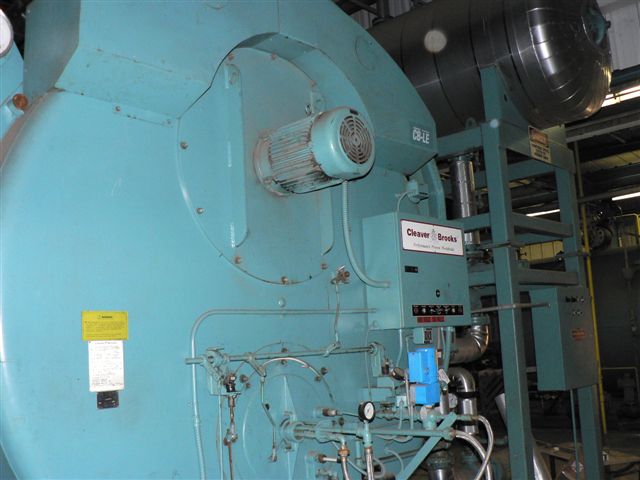








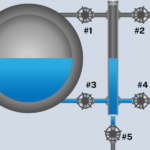
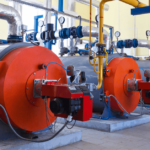
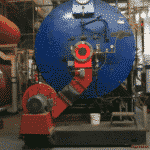
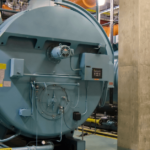
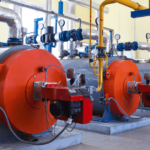
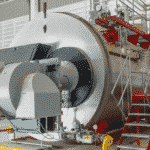
very useful …., the whole procedure in nut shell
exact and to the point.had been looking for the correct procedure.
thanx
ajay
wen v carry out partial blow down do v stop steam to various services????
Hi Parin,
no we dont close any service steam during blowdown either its scum or bottom blowdown of boiler.
thank u mohit.
do we have boiler in cruise vessel??
@ Prakash- Yes, there are boilers in Cruise ship.
Very usefull.but i want to know more about boiler flame failure alarm check @Mohit.
Why ship side / overboard valve to open first??
Asked by my leturer.
During blow down the shipside blow down valve is required to open first, otherwise complete blow down line (from boiler to shipside v/v will come under boiler pressure ( 6 to 10 bar)), most of the time this line is weak and corroded, so chances of failure and consequential accident is high.
if scum valve removes the floating oil from the boiler water by sending it directly through overboard valve without treating it will it not lead to oil pollution .
why do you reduce density of water?
How do you blow down Mobrey controls
What do we need to do with the fuel and feed water?? Do v need d boiler to b shut down?
What is partial slowdown of boiler
non-return v/v dir is wrong
Thank you very much! It’s very precisely and exactly explained .
Is N r v/v arrangement is correct.
when you make excessive blowdown, wat effects will occure in the boiler?
@Rocky: Excessive blowdown will waste energy, water, and chemicals. It will also increase the fuel consumption and increase the time to achieve required rated pressure.
What is flash blowdown in boiler.? Asked in meo class 2
@Kalap: A flash tank is installed and the boiler blowdown is connected to this flash tank. As the blowdown water can be a high-temperature mixture, the heat energy of the blowdown is taken into the flash tank from which it is used to heat the boiler making water.
I have gained a lot from this platform
as ( ACME) student of Maritime Academy of Nigeria. This platform have added value to my carrier and exposed me to so many things which I did not know before l am so grateful
@Aniedi: Glad you found the website helpful. Please do share the knowledge.
Few points that came in my head while going through this well articulated article:
1.Make sure to do ‘Scum Blowdown’ before ‘Bottom Blowdown’ otherwise while doing bottom blowdown the scum settled on water surface or if any oil content it will get agitated, contaminating the boiler water.
2. Instead of the seat cutting effect we can mention ‘Wire drawing effect’.
Recently built ships boiler doesn’t have two blow down valves. Only one blowdown valve for scum and one for bottom blow down. In that case, how the seat cut/erosion problem is rectified.?
Please do check the blow down line valve if they have provided additional valves near the discharge.
Hi Gokul
Thank you for this “Value addition”.
Thank you for information
I have been asked recently in an oral exam what to do if oil is found in the boiler drum. How to get it out without breaking MARPOL regs? Can anyone give the full procedure on safely removing this oil with out discharging overboard?
First, try to remove it by skimming oil from HOTWELL. If the contamination is more, boiling out or acid cleaning should be performed immediately.
How do I calculate the length of time I should blow down for?
i don’t think so .my query is to be practical .but i wanna know the answer… what to do when the boiler in full load as well in need of blowdown
Why to reduce density of water